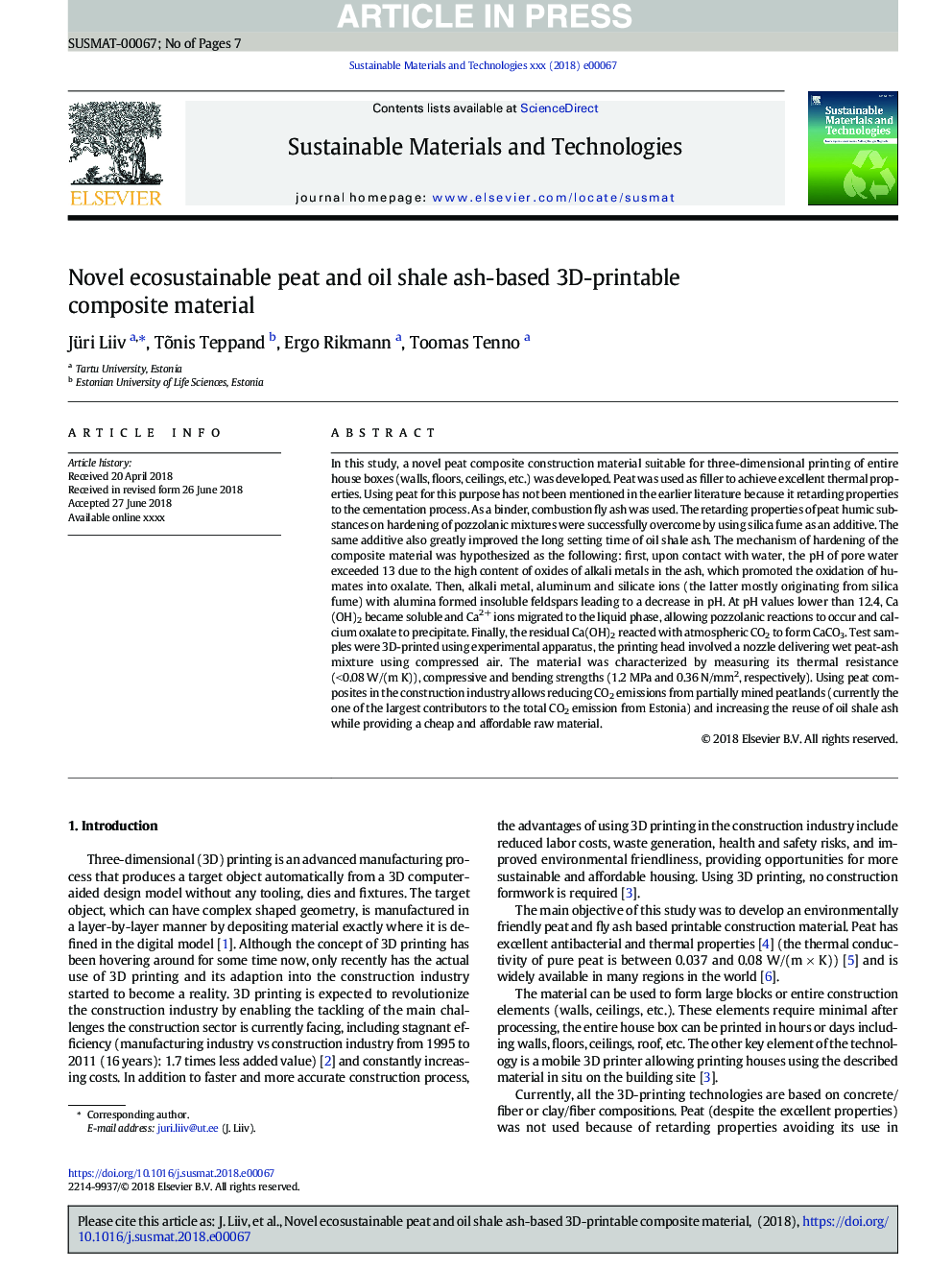| کد مقاله | کد نشریه | سال انتشار | مقاله انگلیسی | نسخه تمام متن |
|---|---|---|---|---|
| 7228321 | 1470849 | 2018 | 7 صفحه PDF | دانلود رایگان |
عنوان انگلیسی مقاله ISI
Novel ecosustainable peat and oil shale ash-based 3D-printable composite material
ترجمه فارسی عنوان
مواد کامپوزیتی قابل چاپ سه بعدی قابل استفاده در روغن زیتون و روغن زیتون شیل
دانلود مقاله + سفارش ترجمه
دانلود مقاله ISI انگلیسی
رایگان برای ایرانیان
موضوعات مرتبط
مهندسی و علوم پایه
مهندسی انرژی
انرژی های تجدید پذیر، توسعه پایدار و محیط زیست
چکیده انگلیسی
In this study, a novel peat composite construction material suitable for three-dimensional printing of entire house boxes (walls, floors, ceilings, etc.) was developed. Peat was used as filler to achieve excellent thermal properties. Using peat for this purpose has not been mentioned in the earlier literature because it retarding properties to the cementation process. As a binder, combustion fly ash was used. The retarding properties of peat humic substances on hardening of pozzolanic mixtures were successfully overcome by using silica fume as an additive. The same additive also greatly improved the long setting time of oil shale ash. The mechanism of hardening of the composite material was hypothesized as the following: first, upon contact with water, the pH of pore water exceeded 13 due to the high content of oxides of alkali metals in the ash, which promoted the oxidation of humates into oxalate. Then, alkali metal, aluminum and silicate ions (the latter mostly originating from silica fume) with alumina formed insoluble feldspars leading to a decrease in pH. At pH values lower than 12.4, Ca(OH)2 became soluble and Ca2+ ions migrated to the liquid phase, allowing pozzolanic reactions to occur and calcium oxalate to precipitate. Finally, the residual Ca(OH)2 reacted with atmospheric CO2 to form CaCO3. Test samples were 3D-printed using experimental apparatus, the printing head involved a nozzle delivering wet peat-ash mixture using compressed air. The material was characterized by measuring its thermal resistance (<0.08â¯W/(mâ¯K)), compressive and bending strengths (1.2â¯MPa and 0.36â¯N/mm2, respectively). Using peat composites in the construction industry allows reducing CO2 emissions from partially mined peatlands (currently the one of the largest contributors to the total CO2 emission from Estonia) and increasing the reuse of oil shale ash while providing a cheap and affordable raw material.
ناشر
Database: Elsevier - ScienceDirect (ساینس دایرکت)
Journal: Sustainable Materials and Technologies - Volume 17, September 2018, e00067
Journal: Sustainable Materials and Technologies - Volume 17, September 2018, e00067
نویسندگان
Jüri Liiv, Tõnis Teppand, Ergo Rikmann, Toomas Tenno,
